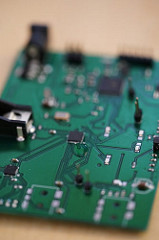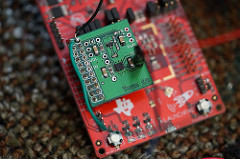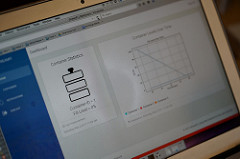May 12, 2017
 Our team members at the final public demo!
Our team members at the final public demo!
Updates made from the previous week are described below:
-
■ Signal Processing and Fill Level Classification, Including Machine Learning Exploration - We developed a couple of different ways to do fill level classification during the week, including testing accuracy with the k Nearest Neighbor algorithm using Python's Scikit Learn library. Additionally, we tested further accuracy with the mini keg and our current algorithm using different placements of the transducer and piezoelectric sensor.
■ Web Application Graph Improvements - Our graphs on the main dashboard page were modified.
■ Assembly of 3D Printed Case - The casing for the CC3200 and breakout board was 3D printed and utilized for the duration of our public demo.
 The overall system with the container, transducer, and piezo sensor
The overall system with the container, transducer, and piezo sensor Detached version of the PCB design inspired by the LaunchPad
Detached version of the PCB design inspired by the LaunchPad Image of the TI CC3200 and custom breakout board
Image of the TI CC3200 and custom breakout board View of the main dashboard of our front-end web application
View of the main dashboard of our front-end web application